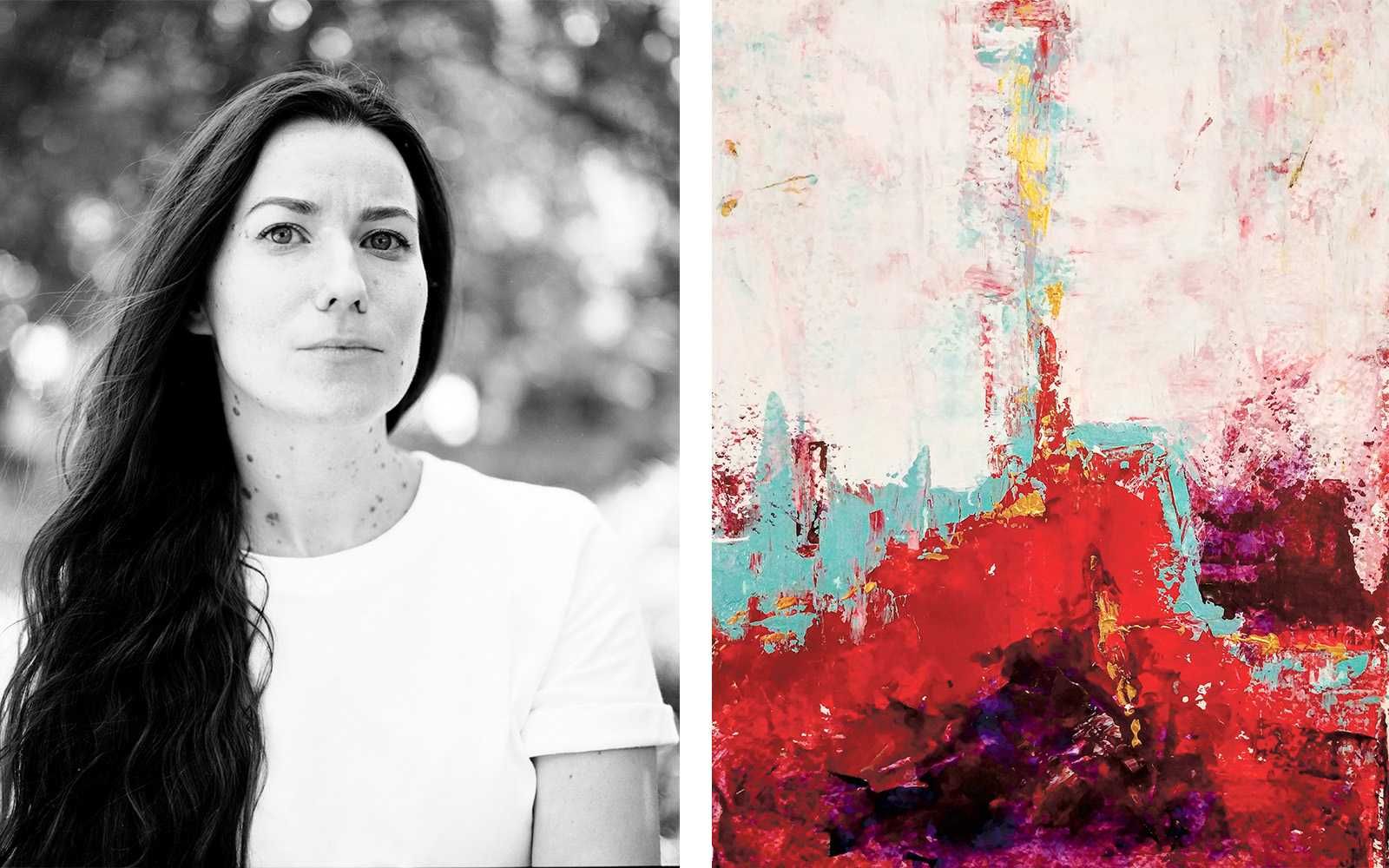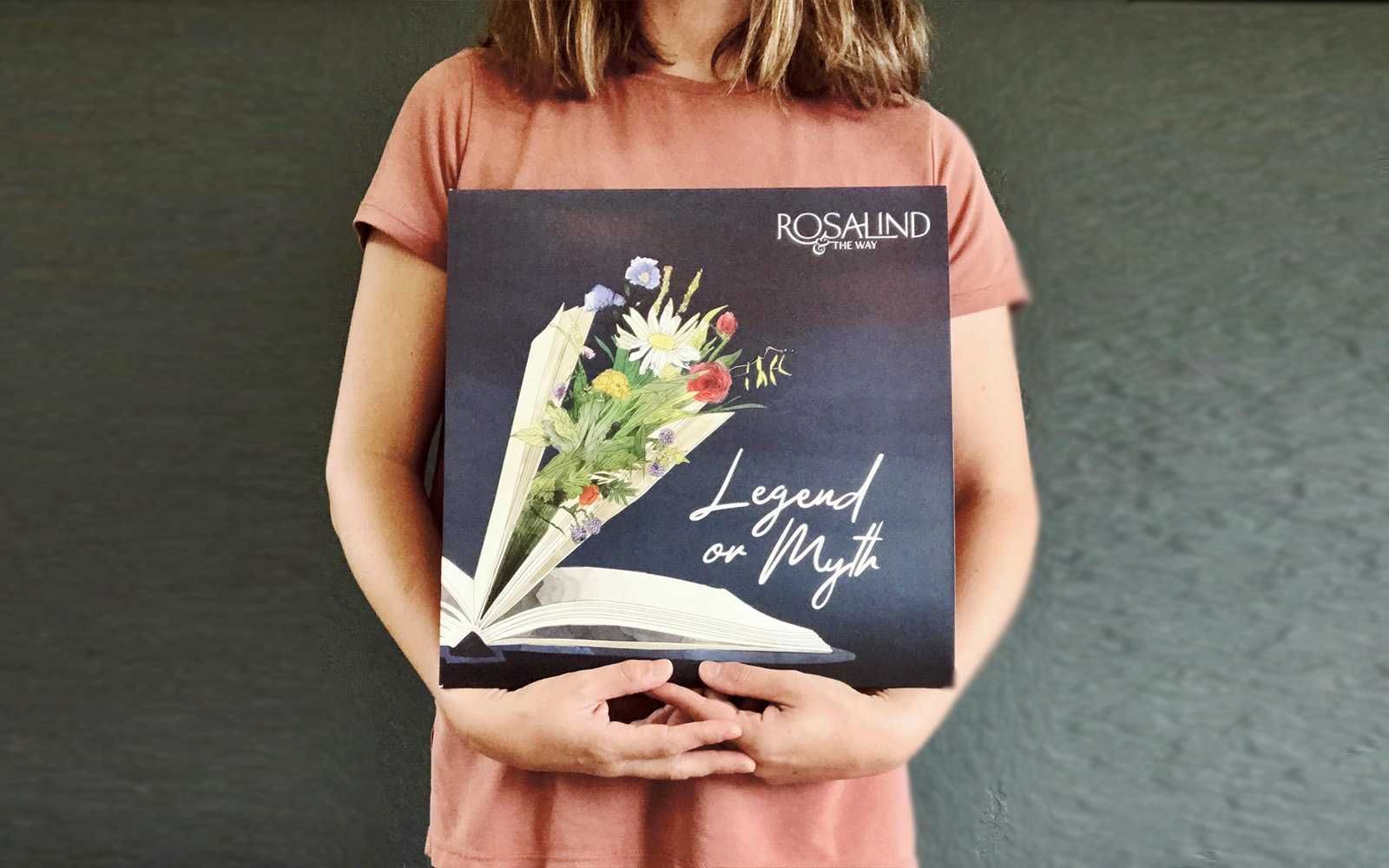Artwork titles often define abstraction. You can usually find a melodramatic name like “A Moonlit Blemish” or “Inner Decay” on a little white card below a mess of colors smeared across a canvas.
The artist is often titling what they’re experiencing or coercing out of themselves instead of what their hands are actually creating. They are working through their issues, traumas, or joys to the benefit of the art appreciator.
Though Alexandra Belyaeva’s abstract paintings do occasionally employ names like “High Hopes” or “I Sometimes Think About You Often,” most of her work is left untitled or simply uses a number to serve the part. But these titles just served a practical purpose as Belyaeva has plenty of past distress to work through like anyone else.
Transposing pain to paint
“I don’t remember any of my pieces’ names because I never usually give them any,” Belyaeva said. “When I have a show, I’ll name them, but I don’t remember all of them. That sounds silly, but can I get away with it?
“With every painting, I aim to bring reconciliation to the emotion I am working through. I’d love for people to look at my work and find the relief they search for. Internal conflict, spiritual frustration, and existential melancholy are often our everyday companions. My work attempts to find a resolution for the contradicting emotions and difficult times people go through in life. I hope it brings the viewer a sense of peace and reconciliation.”
It’s through these words we are given access to the artist’s intentions. When you scroll through Belyaeva’s Instagram, you can be overwhelmed with the different ways colors can interact and how many textures are brought to life through paint.
So yes, she can get away without titles since her value obviously lies elsewhere — in the transposing of pain to paint.
Childhood in Russia
Since being a child, Belyaeva was able to find and experience the beauty around her.
“I have been an admirer of the arts all my life. Growing up in Russia as a child, I was exposed to music, painting, dancing, and acting, both in my family and all around us,” Belyaeva said. “I was blessed by my parents’ ability to let their kids try a little bit of everything on their own. My relatives are writers, opera singers and painters as well.
“When I got older, though, I went away from the creative expression exemplified around me and went into learning languages and studying business. A lot of it came with the perception that being an adult meant you have to take on responsibility and abolish childlike behavior. I was a very black-and-white teenager. Things were either right or wrong, nothing in between. It took me years to get to where I am in my relationship with creative expression. And of course, I still have room for growth in my understanding of it.”
Belyaeva went away from art despite being surrounded by it. But she was later able to combine her practical leanings with a desire that surfaced in middle school.
“I wanted to be an interior designer when I was in middle school,” she said. “Playing with colors and textures always made me happy. My creative endeavors in painting never went anywhere as I started to write poetry and processing life in words rather than paint. I was ‘growing up’ and had no time for playing around.
“Years later, however, I found myself unable to process some difficult situations in life, including a divorce. I was fortunate enough to meet somebody who inspired me to try abstract oil painting, and it came as a form of therapy at precisely the right time.”
A Form of Catharsis
Belyaeva has undeniable talent. Working with oil paint as a form of catharsis yields a prolific output and respect from her peers. The area is bursting at the seams with talented artists in every medium and level.
Belyaeva is adding her own brilliance to this local art splendor. She does this by listening to the stimulus around her and letting it guide her creative choices.
“I find inspiration in the human response to life,” she said. “We are all so different, yet similar at the same time. Each one of us has a story and a myriad of emotions we process every day. My work is an attempt to find a resolution for the contradicting emotions of difficult times people go through in life.
“Usually, I find myself pondering a question, struggling with melancholy, or simply moved by someone’s emotion. That triggers the choice of color and texture. Once I feel like my mind has settled down, the piece is complete.
“However, if what I put on the canvas is not enough, it will pour into another piece or even two more. That’s why you can find some mini-series in my work.”
“I often think my style is all over the place, but when I inquire deeper, I find that my emotional state drives my style. Even though it seems very different at times, it all comes from the same place of allowing what’s present in the moment to come out. That’s a style of its own.”
Though Belyaeva may think her style is on the sporadic side, viewing her paintings one after another while soaking in the color, texture, and finesse she brings to each piece offers the viewer a very consistent presentation.
“I am not a proud person,” she said. “I have to remind myself constantly that there are things in my life I can take pride in, like making it on my own in a foreign country.
“I moved to the United States eight years ago. My family lives 5,000 miles away, and most of my closest childhood friends live even farther. I went through some hard times and had to rebuild my life from scratch and made some awesome friends in the process. Life is pretty good and if I can remember that daily through painting, I count that as a win.”
You can find more of Belyaeva’s art at
alexbelyaeva.com as well as pop-up shows around the Fort Wayne area.



